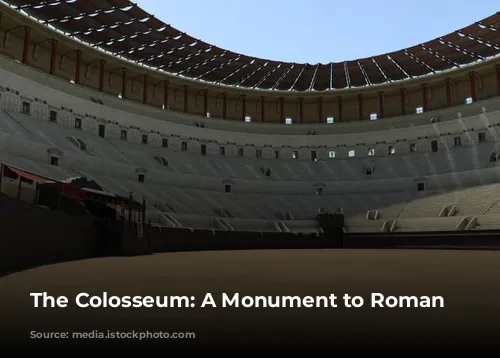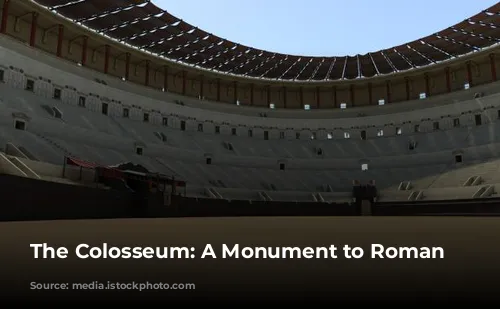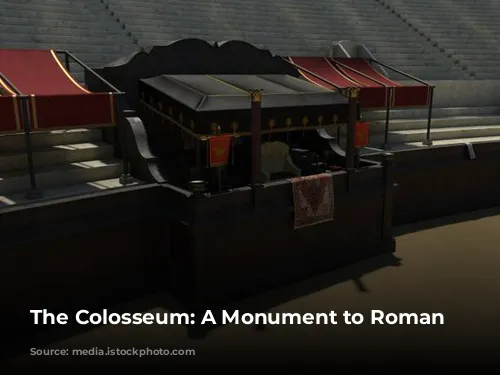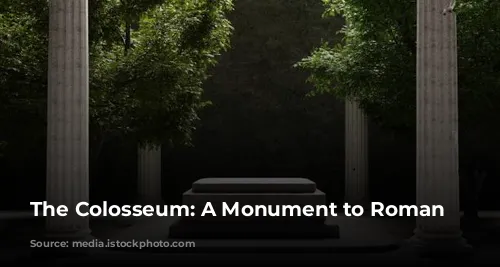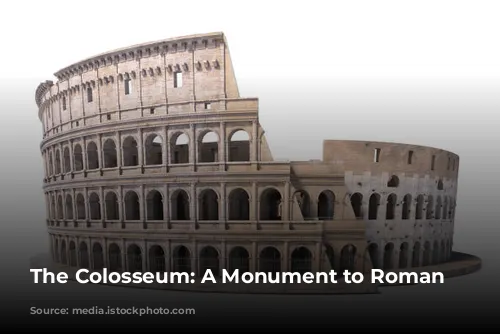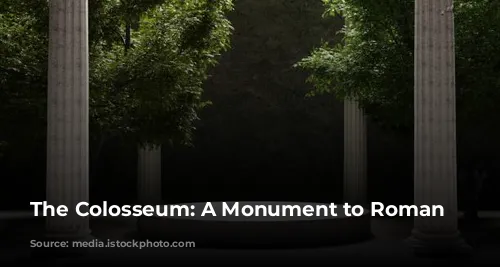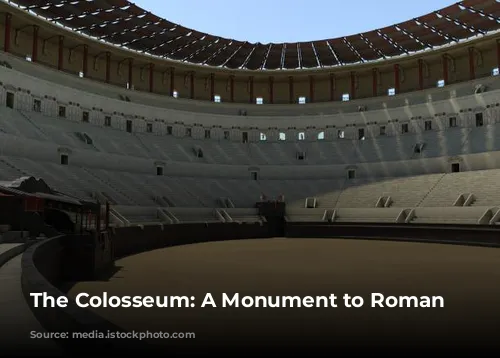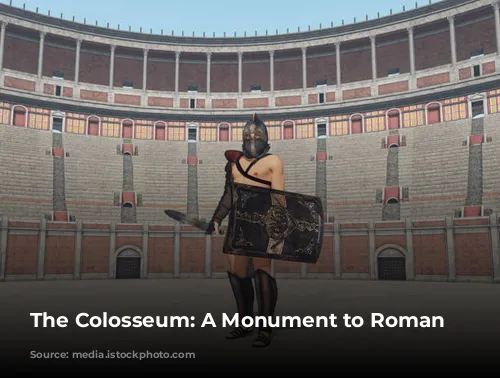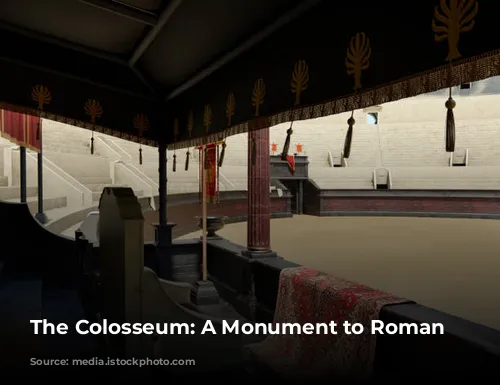The Colosseum, a magnificent amphitheater in the heart of Rome, stands as a testament to the Roman Empire’s power and grandeur. Its sheer size and intricate design are a source of wonder and admiration even today. This article delves into the architectural marvels and historical significance of this iconic structure.
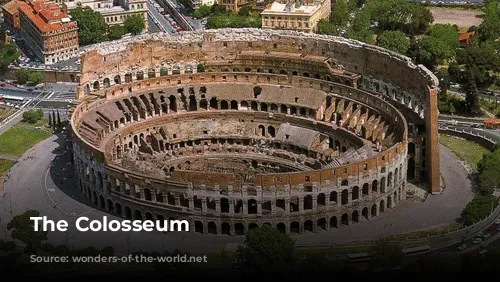
A Colossal Structure: Dimensions and Design
The Colosseum’s imposing presence is immediately evident. It is not a perfect circle, as it may appear at first glance, but rather an ovoid shape, resembling an egg. This elliptical structure stretches 187.75 meters in length and 155.60 meters in width, resulting in a unique and striking visual impact. Its height, measured from the current ground level to the highest point of the structure, reaches 50.75 meters.
The Colosseum’s design is a testament to Roman engineering brilliance. It comprises a central arena, tiered seating levels, and a grand facade that once adorned the exterior. The arena, measuring 83 meters in length and 48 meters in width, was the stage for gladiatorial combats, animal hunts, and public executions. The surrounding terraces provided seating for thousands of spectators, showcasing the Roman society’s love for spectacle and entertainment.
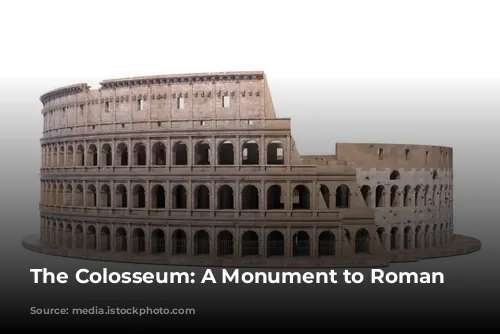
A Colossal Structure: Dimensions and Design (Continued)
The Colosseum’s facades are adorned with 80 arcades, arranged on three levels. Each arcade, spanning 4.2 meters in width and 6.45 meters in height, provides a sense of grandeur and architectural balance. However, the lower arcades stand taller, reaching 7.05 meters in height.
The Colosseum’s capacity is truly remarkable. Estimates suggest that it could hold between 75,000 and 80,000 spectators, a number equivalent to the population of a modern-day mid-sized city. On days of grand events, the Colosseum drew large crowds from the surrounding area, highlighting the importance of this arena in Roman life.
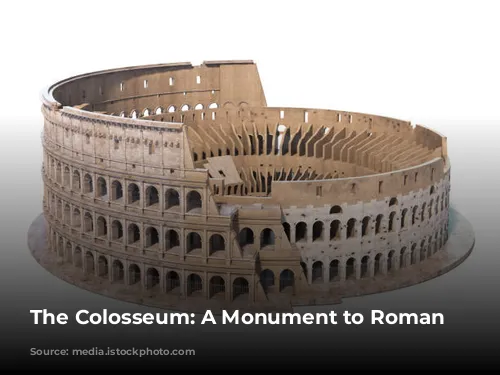
A Colossal Structure: Dimensions and Design (Continued)
The Colosseum’s ovoid shape was not a unique Roman invention. Ancient Romans adopted this design for their amphitheatres across the empire, a testament to its practicality and aesthetic appeal.
The seating arrangement within the Colosseum reflected the social hierarchy of ancient Rome. The most prominent citizens occupied the best seats, while those of lower social standing were assigned to less desirable locations. This social hierarchy, ingrained in every aspect of Roman life, was evident even in the way people enjoyed entertainment.
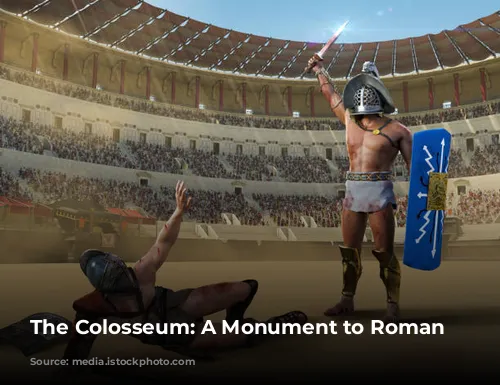
Beyond the Colosseum: Comparing Amphitheatres
The Colosseum’s size and grandeur were unmatched in the Roman world. However, other notable amphitheatres existed throughout the empire, each possessing its own unique characteristics.
The amphitheater in Leptis Magna, built in 56 AD by Emperor Nero, measured 121 x 111 meters, with an arena spanning 57 x 47 meters. Located on the North African coast, it was a testament to Roman power in the region.
The amphitheater in Pompeii, dating back to 80 BC, was one of the oldest permanent Roman amphitheatres. Its dimensions were 135 x 104 meters, with an arena of 67 x 35 meters. Remarkably, it remains relatively well-preserved today, offering a glimpse into the past.
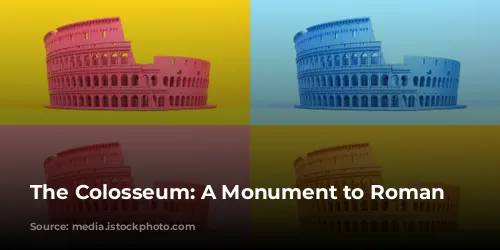
Beyond the Colosseum: Comparing Amphitheatres (Continued)
The amphitheater in Nîmes, France, constructed in 90 AD, stands as a testament to Roman influence in Gaul. Its dimensions were 133 x 101 meters, with an arena of 69 x 38 meters.
In Mérida, Spain, the ruins of a Roman amphitheater built in 8 BC are a reminder of Roman presence in the Iberian Peninsula. It measured 126 x 65 meters.
The amphitheater in Pula, Croatia, was constructed in 79 AD, coinciding with the Colosseum’s construction in Rome. With dimensions of 133 x 105 meters, it stands as a magnificent example of Roman architecture in the region.
These amphitheatres, while impressive in their own right, demonstrate the Colosseum’s exceptional size and capacity. They also serve as a reminder of the vastness of the Roman Empire and its lasting impact on the world.
